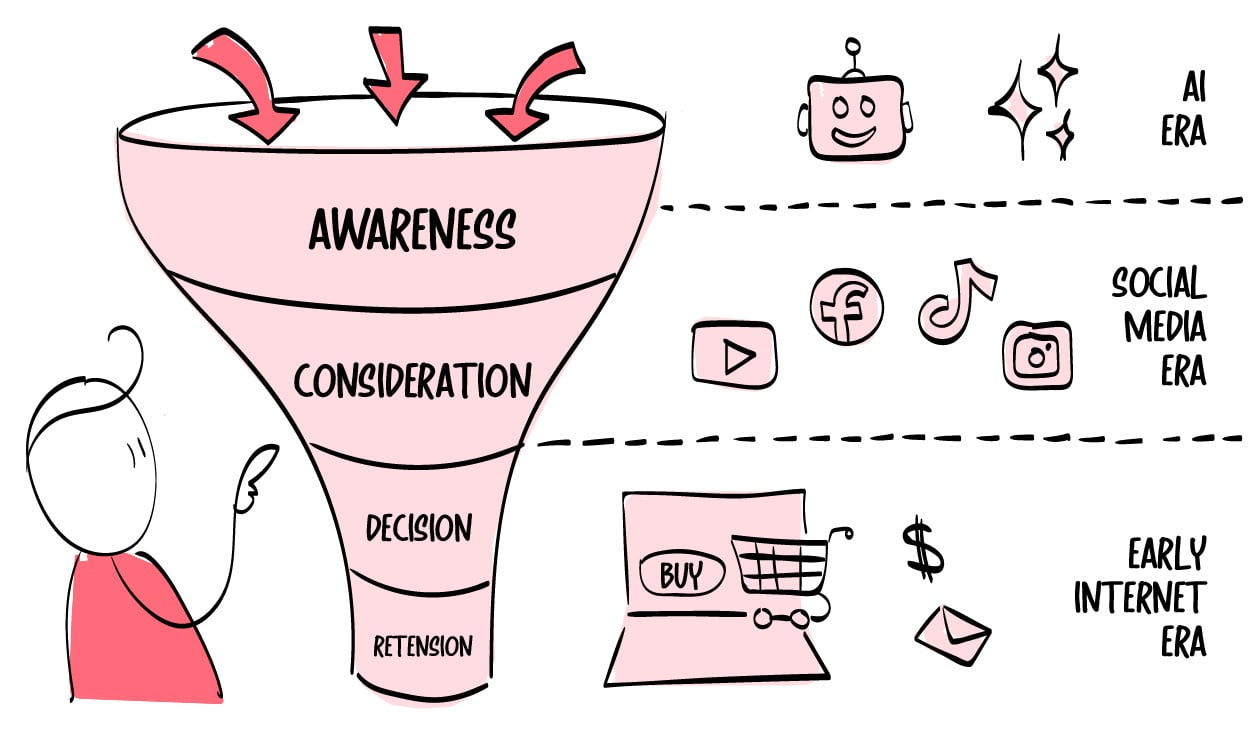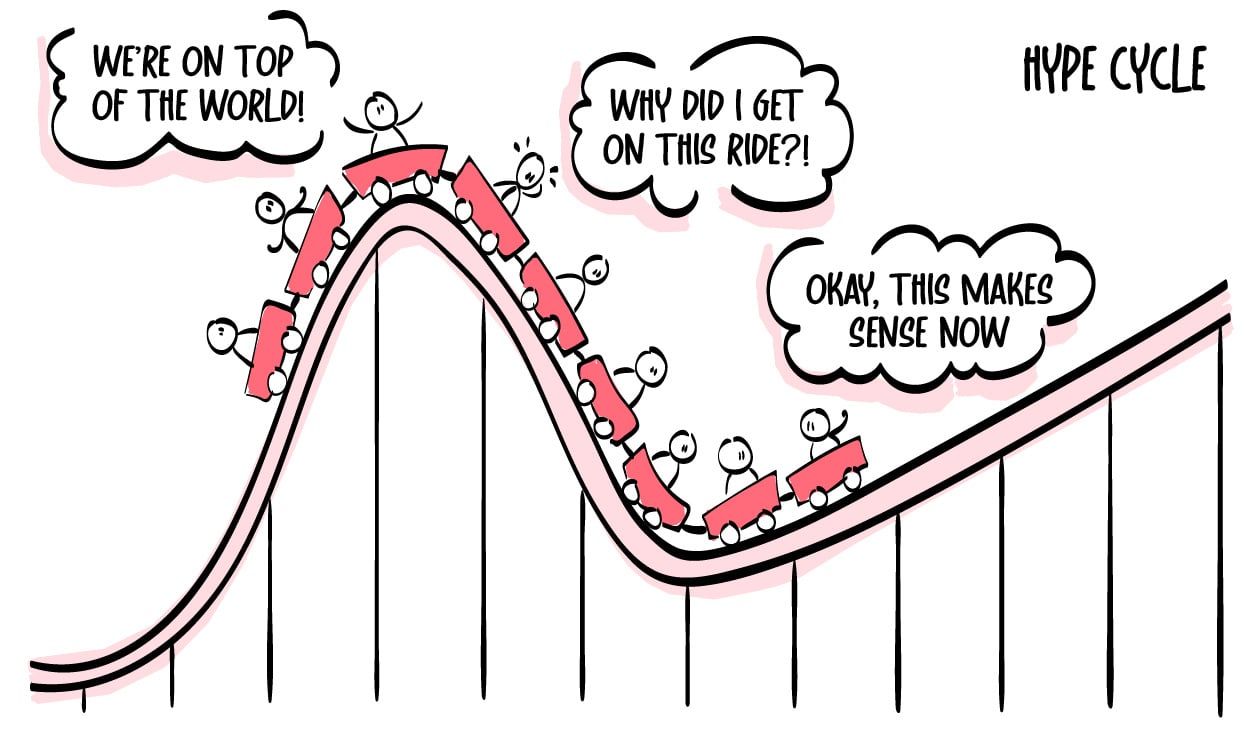
A weekly newsletter exploring the intersection of creative operations, technology, and online retail.
#014: AI Is Changing How We Shop. Here’s What It Means for Online Retailers
For years, online shopping has steadily integrated into our daily lives. Today, AI is accelerating that evolution at a breakneck pace, reshaping how consumers make purchasing decisions.
Take OpenAI’s recent release of Operator, which automates everyday tasks like grocery shopping and expense filing. It offers a preview of a future where AI eliminates friction in the buying journey, making once-conscious choices nearly invisible.
To stay competitive, studio managers and creative directors must do more than follow trends. They need to anticipate how AI-driven consumer behavior will reshape content production.
Let’s explore AI’s role in the buying funnel and its implications for the future of retail.
From Browsing to Buying: AI's New Role in Retail
The traditional buying funnel was a neat, predictable journey—awareness, consideration, decision, and retention. But AI has completely reshaped that. Today, the process is anything but linear.
Buyers don’t just move down the funnel step by step; they jump in and out at different stages, guided by real-time recommendations, personalized interactions, and automated engagement.

One of the biggest shifts happening right now is at the top of the funnel: capturing attention. Here, AI isn’t just reacting to demand; it’s actively shaping it.
Instead of waiting for consumers to search for a product, AI can now introduce curated suggestions and personalize interactions at the attention stage, reshaping how consumers discover, engage, and purchase later down-funnel. OpenAI’s Operator illustrates this shift.
Let me borrow an example from my colleague Emil, who knows coffee but wasn’t sure which beans were best for pour-over. Specialty sites had great branding but lacked simple filters for light roast, pour-over.
So, he asked AI: Find me five options like Coffee Collective, recommend one, and tell me how to brew it. In seconds, he had exactly what he needed and purchased without further research.
It’s a small but telling example of how AI is reshaping search, curation, and decision-making. Instead of navigating a sea of options, we’re moving toward a world where we can describe what we want in plain language and get the correct answer instantly.
However, there’s a familiar challenge. Much like during the dot-com bubble in the late 1990s, technology often outpaces consumer habits, leading to a lag in adoption. AI is no exception.
While its potential to transform the buying journey is immense, its widespread adoption depends on how quickly consumers—and online retailers—adjust to these ongoing innovations.
Timing and Trust: Navigating AI’s Adoption Curve
Timing is everything. In the short term, agentic AI—like Operator—might feel overhyped, promising more than it can deliver. But in the long term, we will likely realize we underestimated its potential.
The hype cycle will create excitement and investment, but adoption will lag. Why? Not because the technology isn’t ready (it is) but because habits, trust, and financial realities are harder to change.

It’s important to mention that while AI changes how people spend, it doesn’t change how much.
According to the German Federal Statistical Office, the average Dane spends just 12.38% of their disposable income on food, channeling the rest into priorities like electronics or travel. Convenience isn’t the barrier to spending more; financial constraints and willingness to are.
AI could potentially improve the shopping experience—that’s a given—but it won’t rewrite spending patterns. The real competition will be over market share, convincing consumers to choose one brand over another.
That’s where AI could shine: creating seamless and personalized omnichannel shopping experiences that rival—or perhaps even surpass—what we’ve come to know and expect from physical stores.
Adapting to AI: The Studio’s Opportunity
AI is reshaping retail faster than expected, bringing new possibilities and pressures for studios.
However, the fundamental challenge for how studios operate remains the same: creating the right content for the right audience.
Last month, I wrote about why defining personas is critical for AI-driven personalization. The same applies here.
The more precisely studios can map their workflows to the right context, the better they’ll be positioned for what’s next.
If you missed that post, it’s worth revisiting.
More to come.
Thomas

|
Thomas Kragelund Follow me on LinkedIn. |
Get Content Insider In Your Inbox.
The weekly newsletter packed with actionable tips, industry trends, and insider insights from Creative Force CEO Thomas Kragelund. Stay ahead in creative production and online retail—subscribe now to gain the insights you need to drive growth and stay competitive.



